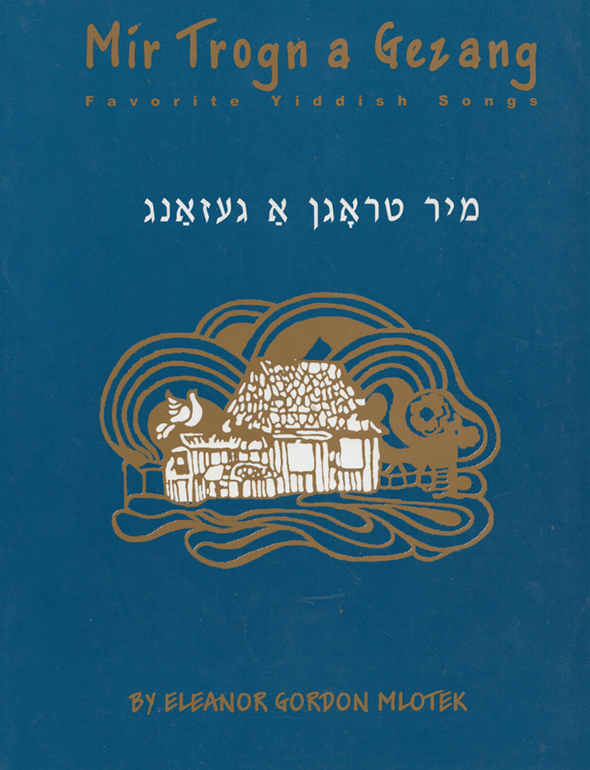Part of a song from the operetta Bar Kokhba (1883) by Abraham Goldfaden (1840-1908), founder of the modern Yiddish theatre. The shepherd here represents the Jewish people. The operetta led to the closing down of all Yiddish theatres in Russia by the Czarist government, on August 17, 1883, because of alleged revolutionary allusions.

A shepherd, there once was
in the Land of Canaan,
with sheep and cattle beyond counting
he would trade.
And when he became rich,
he dealt in rye
and lost his money.
He was in a bad way;
In order not to beg for bread,
he would knead bricks,
build houses and stores,
working as a slave!
Oh, it’s fine,
yes, perfectly charming,
tell it, and do not stop!
Oh, it’s sweet,
yes, not terrible at all,
tell us all the way to the end!
A pastekhl iz geven a mol
In dem land kenan,
Mit shof un rinder gor on tsol
Flegt zayn handl zayn.
Un az er iz raykh gevorn,
Hot er gehandlt korn,
Un hot zayn gelt farlorn,
S’iz im gegangen shlekht;
Abi nit broyt tsu betn,
Flegt er tsigl knetn,
Gemoyert hayzer, kleytn,
Gearbet far a knekht!
CHORUS:
Oy, s’iz sheyn, Yo, mole kheyn,
Dertseyl un her nit oyf! Oy, s’iz zis,
Yo, gornit mis,
Dertseyl undz bizn sof!
אַ פּאַסטעכל איז געװען אַ מאָל
אין דעם לאַנד כּנען,
מיט שאָף און רינדער גאָר אָן צאָל
פֿלענט זײַן האַנדל זײַן.
און אַז ער איז רײַך געװאָרן,
האָט ער געהאַנדלט קאָרן
און האָט זײַן געלט פֿאַרלאָרן,
ס’איז אים געגאַנגען שלעכט;
אבי ניט ברױט צו בעטן,
פֿלעגט ער ציגל קנעטן;
געמױערט הײַזער, קלײטן;
געאַרבעט פֿאַר אַ קנעכט!
רעפֿרײן:
אױ, ס’איז שײן,
יאָ, מלא חן,
דערצײל און הער ניט אױף!
אױ, ס’איז זים,
יאָ, גאָרניט מיאום,
– דערצײל אונדז ביזן סוף!
Song Title: A Pastekhl

First published in 1972, Mir Trogn A Gezang: Favorite Yiddish Songs was reprinted six more times (in 1977, 1982, 1985, 1987, 1988, 2000) due to popular demand. The songs in this anthology represent a sampling of beloved folk and well-known Yiddish songs, many of which are scattered in various song collections; some appear in very rare and inaccessible collections; and some were never before published. Folk songs comprise about a third of this volume and were selected mainly on the basis of popularity and sometimes for their historic significance. Needless to say, they are only representative of the vast, rich treasure of Yiddish folk material. The selection was made not only on the basis of personal preference, but in the knowledge they are favorites of many who sing these songs. Most of the songs represent the repertoire that was sung at Yiddish summer camps, May 1st demonstrations and at social gatherings. Many songs were introduced to American Jewry by Jewish immigrants who came to the United States after World War II, for whom these songs had been favorites in Poland and other East European communities destroyed by the Nazis.